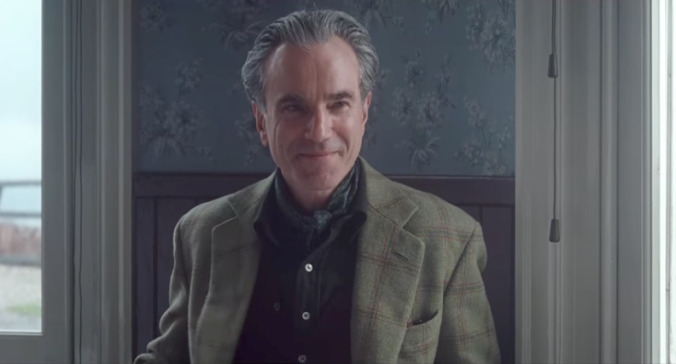Here's what there is to know about the monastic, monster-loving man who inspired Phantom Thread

Not a lot is known about Paul Thomas Anderson’s upcoming Christmas-day downer Phantom Thread. Ostensibly Daniel Day-Lewis’s final film, it follows a masterful fashion designer as he falls in love, unraveling his carefully regimented world. There are a lot tense stringed instruments on the soundtrack, suggesting a certain amount of suspense to the proceedings. Someone will probably completely freak out at some point, because it’s a PTA movie. It’ll probably be very good.
In a new interview with Entertainment Weekly, Anderson divulges a few details—like the fact that the film was written collaboratively with Day-Lewis, as shot by a committee of people rather than a traditional director of photography—but one aside about the plot may reveal a little more about the film. When asked about how long the idea had been simmering in his mind, Anderson replied:
It’s very new. It’s a new idea, really within the past few years. Some of the previous films I’ve made have been ideas that have been lingering around for a while in one form or another. I generally didn’t have that much knowledge or interest in the fashion world until I started finding out a little bit about a guy named Cristóbal Balenciaga. He led very monastic life, completely consumed with his work — sometimes at the expense of other things in his life. Our characters become something very different. Our story focuses on if you have a character like that, what would it take to disrupt his life. Usually, it’s love that does that.A good dollop of suspense with a love story is a nice combination.
Anderson has a history of loose adaptations, transforming Upton Sinclair’s more economically minded journalistic work Oil! into the intensely expressionistic character study of There Will Be Blood. And, of course, he famously based The Master on the life of Scientology founder L. Ron Hubbard, but in that instance eschewed many of the more salacious details of his life in favor of a closer inspection of smaller, stranger details. As he notes in the quote above, Balenciaga’s life is “something very different” from what they ended up with, but a look at his biography shows some elements that it’s hard to imagine won’t make their way into Phantom Thread, if Anderson’s past work is anything to go by.
Balenciaga is most renowned for his deeply private approach to public life and the meticulousness with which he did his work. He was held in almost god-like esteem by the fashion world of the 1950s and ‘60s, referred to only as “the king”; when spotted, however rarely, in public, he was treated reverently, curtsied at as if he was royalty. Of particular note was his skill with his hands, designing, cutting, and sewing his immaculate pieces himself, a characteristic that you have to imagine resulted in the requisite 10,000 hours of practice for Day-Lewis. Balenciaga shunned the press, giving only one full interview in his lifetime and watching his own fashion shows from the doorway, which were, nevertheless, silent, almost religious events for the people who passed muster to attend.
He was extraordinarily selective of the people who wore his clothes. Perhaps most interesting was his taste in models, who have been dubbed his “monsters”—women of all body types who never smiled or made eye contact, gazing coldly, almost bloodlessly at their audiences and prospective buyers. These models were the only women who wore his clothes, even in fashion shoots for major magazines. If you attempted to buy any of them yourself, you’d have to go through a gauntlet, according to this Telegraph article on the enigmatic designer’s lingering allure:
The shopping experience at 10 avenue Georges V could be daunting. On the ground floor was a boutique, the antechamber to the couture house proper. No clothes were sold in it, only bags, gloves, perfumes and, Vogue added, ‘really divine jewellery’. A commissionaire led couture clients to a lift upholstered in red Córdoba leather. This took you directly to the third-floor salon. As you crossed the hallway the creaky parquet alerted Mme Véra to your presence even before you had rung the doorbell. She sat, stout and bespectacled, at a desk in front of a folding screen, and required that you hand over identification as if you were about to cross a border – as, in a way, you were. If you passed muster, you stepped behind the screen into a corridor. On one side were mirrored doors that led to the fitting rooms, and on the other, open doorways on to the salon with its row of windows overlooking the avenue. A client who asked to bring a friend curious to see the show was met with a verbal slap from Mlle Renée: ‘Curious women are not welcome here.’ Under her command, the house ran with military efficiency from the end of the war until it closed in 1968.
You can pretty much picture Anderson letting that playing out on-screen verbatim. Balenciaga is, in short, another obsessive genius for two obsessive geniuses to dramatize. You can watch him set fire to a bunch of mannequins or something when Phantom Thread comes out on Christmas Day.